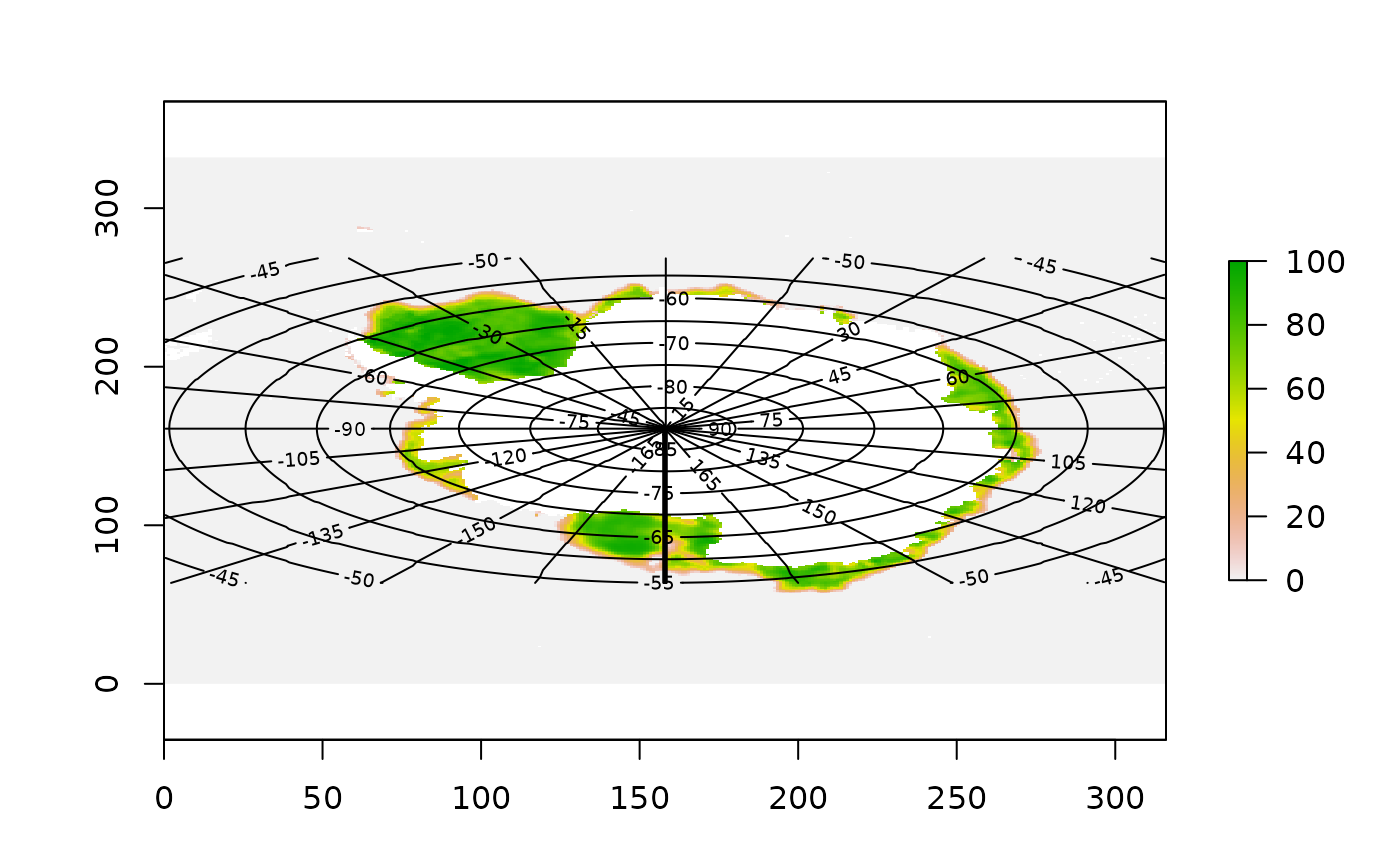Returns a RasterStack of the given variable names.
romscoords(
x,
spatial = c("lon_u", "lat_u"),
ncdf = TRUE,
transpose = TRUE,
...,
varname = "",
flip_y = TRUE
)Arguments
- x
ROMS file name
- spatial
names of coordinate variables (e.g. lon_u, lat_u)
- ncdf
default to NetCDF no matter what file name
- transpose
the extents (ROMS is FALSE, Access is TRUE)
- ...
unused
- varname
in desperate cases, specify the variable that these coordinate variables belong to
- flip_y
Y coordinates are assumed to be in top-down order, set to FALSE to assume down-up
Value
RasterStack with two layers of the 2D-variables
Details
The two layers from the model output are used to define the real-world space. This is used to create a boundary romsboundary, to map real-world
objects into grid space romscoords and to generate graticules for mapping into the grid space with graphics::contour.
